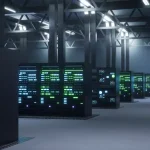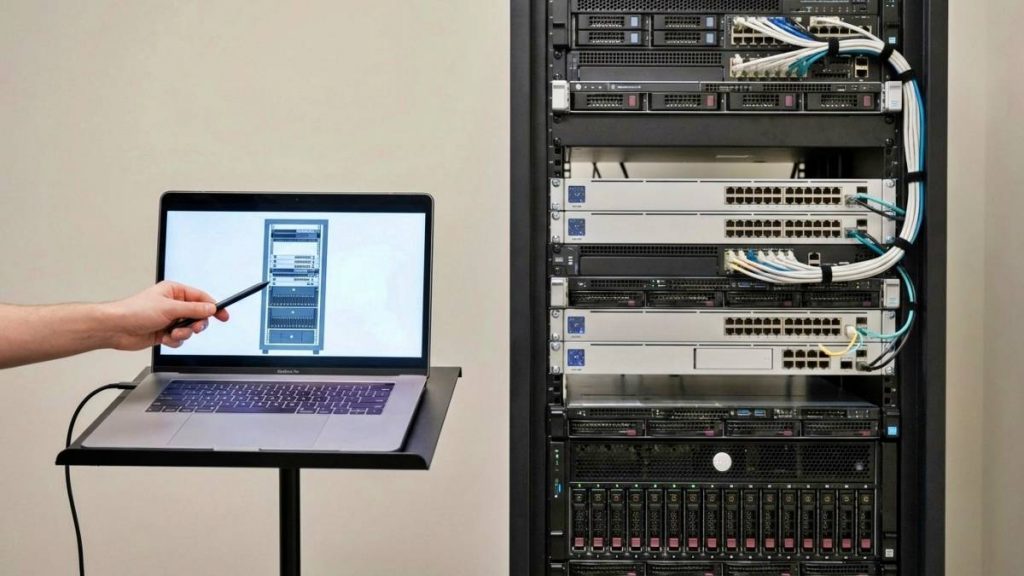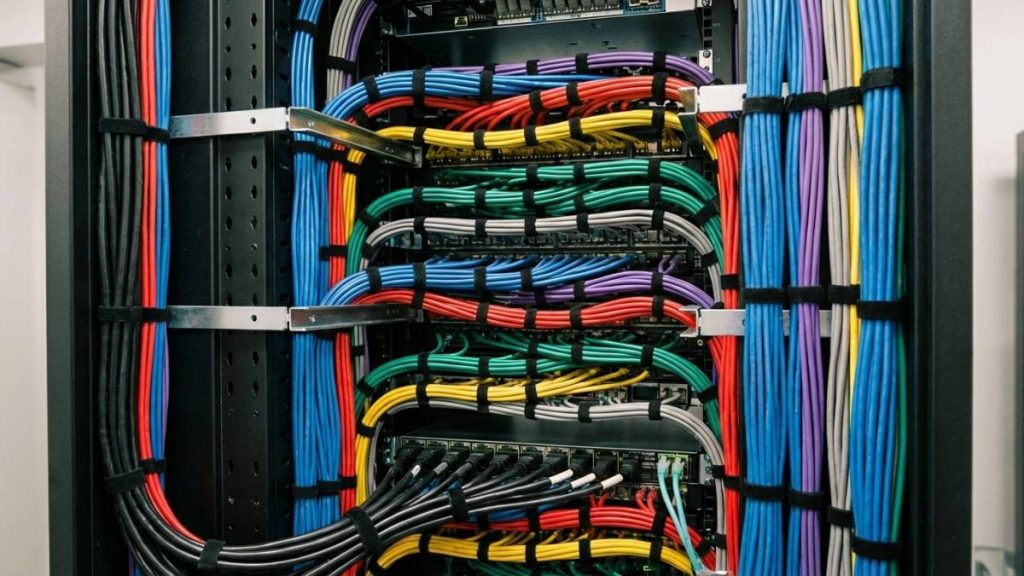The New Normal: Extreme Weather Challenges for California Businesses

When it comes to business continuity in California, the conversation has undergone a dramatic shift over the past decade. What were once considered “once-in-a-lifetime” weather events have become seasonal re-occurrences. Record-breaking wildfires, atmospheric rivers, drought conditions, and power blackouts now represent predictable business disruption risks rather than rare anomalies.
For Sacramento businesses and organizations throughout Northern California, these environmental challenges create a pressing question: How can you ensure your critical IT infrastructure and data remain safe, accessible, and operational when disaster strikes?
The answer increasingly lies in how modern data centers are evolving to meet these challenges head-on.
The Growing Threat Landscape
California’s climate reality is stark. Since 2017, the state has experienced some of the largest wildfires in its recorded history. PG&E and other utilities now regularly implement Public Safety Power Shutoffs (PSPS) that can leave businesses without power for days. Meanwhile, when atmospheric rivers bring flooding, they often target the same regions previously threatened by fire, creating compound disaster scenarios.
For businesses relying on on-premises IT infrastructure, these threats pose existential risks:
- Direct physical damage to equipment from fire, smoke, or water
- Extended power outages that render systems inoperable
- Connectivity disruptions that interrupt remote access
- The inability to physically access facilities during emergencies
- Data loss if backup systems are similarly compromised
As Federal Emergency Management Agency (FEMA) data shows, nearly 40% of small to mid-sized businesses never reopen following a disaster that causes significant data loss or extended downtime. The U.S. Small Business Administration points out that over 90% of companies affected by a catastrophe ultimately fail within two years. The stakes couldn’t be higher.
How Modern Data Centers Are Responding
At Datacate, we’ve made substantial investments in creating climate-resilient infrastructure. Our approach mirrors industry best practices that are helping data centers throughout California adapt to these growing threats:
Strategic Location Planning
The first line of defense against natural disasters is location selection. Modern data centers are increasingly:
- Built outside of high-risk wildfire corridors and flood zones
- Located in areas with multiple power transmission paths
- Creating buffer zones with defensible space around facilities
- Selecting locations with access to multiple fiber network routes
- Ensuring multiple ingress/egress points for physical access
For Sacramento businesses, this creates a significant advantage. The region offers relative safety from the most extreme wildfire risks that plague foothill communities while maintaining easy accessibility.
Hardened Physical Infrastructure
Beyond location, data centers are fundamentally changing how they’re built:
Fire Protection Systems
- Advanced VESDA (Very Early Smoke Detection Apparatus) that can detect microscopic smoke particles before fires develop
- Clean agent fire suppression systems that extinguish fires without damaging IT equipment
- Fire-resistant building materials and compartmentalization
- Regular fuel reduction and vegetation management around facilities
Flood Mitigation
- Elevated equipment platforms keep servers above potential flood levels
- Robust water drainage systems and pumps
- Sealed entry points with water-resistant barriers
- Humidity control systems that protect against moisture damage
Seismic Protection
- Reinforced building structures exceeding California’s strict building codes
- Specialized server racks with seismic bracing
- Flexible connection points for power and network infrastructure
- Raised flooring systems with earthquake isolation features
Power Resilience Strategies
Power disruption is among the most common threats during California’s extreme weather events. Modern data centers have implemented multi-layered approaches:
- Connections to multiple power feeds where possible
- Relationships with utilities for priority restoration
- Separate power paths within the facility with automatic transfer capabilities
Backup Generation
- N+1 or 2N diesel generator configurations, ensuring multiple backups
- 72+ hour fuel reserves with priority refueling contracts
- Regular load testing under full operational conditions
- Paralleling systems so multiple sources to work in tandem
Uninterruptible Power Supply (UPS)
- Battery systems bridging the gap between utility failure and generator activation
- Scaled to support full operational loads, not just critical systems
- Regular capacity testing and battery replacement programs
Connectivity: Ensuring Your Data Stays Accessible
Even a physically secure data center with power is useless if network connectivity fails. Data centers have significantly enhanced network resilience:
Carrier Diversity
- Multiple independent ISP connections through different physical paths
- Automatic failover systems to reroute traffic when carriers experience issues
- Relationships with emergency bandwidth providers for critical situations
Software-Defined Networking (SDN)
- Dynamic traffic management rerouting connections around damaged infrastructure (where available)
- Quality of Service (QoS) systems to prioritize critical applications during limited bandwidth scenarios
- Virtual network environments that can rapidly redeploy if physical equipment is compromised
Satellite and Wireless Backup
- Alternative connection methods when terrestrial networks fail
- Specialized equipment for maintaining critical communications
- Pre-established emergency response protocols with telecommunications providers
The Human Element
Technology alone isn’t enough. Data centers have also revolutionized their operational approaches:
24/7 Operations Teams
- Around-the-clock staffing ensures an immediate response to emerging threats
- Cross-trained personnel capable of managing multiple emergency scenarios
- Regular disaster simulation exercises and continuous improvement processes
Emergency Response Planning
- Detailed playbooks for different disaster scenarios
- Coordination with local emergency services and utilities
- Evacuation and shelter-in-place protocols for staff safety
- Regular review and updating of emergency procedures based on real-world events
Customer Communication Protocols
- Multi-channel emergency notification systems
- Regular status updates during ongoing situations
- Dedicated emergency contact methods that remain operational during disasters
- Transparent post-incident reporting and improvement tracking
Regulatory Compliance and Industry Standards
California leads the nation in establishing rigorous standards for critical infrastructure protection. Modern data centers not only comply with these requirements but often exceed them:
- Title 24 energy efficiency requirements ensure sustainable operations
- SB 901 wildfire mitigation planning requirements
- NFPA 75 fire protection standards for information technology equipment
- CPUC regulations for backup power systems
- Cal/OSHA emergency action plan requirements
The California Office of Emergency Services (Cal OES) and CalFire also provide guidance that shapes data center disaster readiness programs. These regulatory frameworks create a foundation of minimum requirements that reputable data centers build upon with additional safeguards.
The Datacate Approach: Sacramento’s Climate-Resilient Infrastructure
At Datacate, we’ve integrated these industry best practices while adding specialized local knowledge and capabilities. Our Sacramento-area facilities benefit from:
- Strategic positioning outside high-risk wildfire zones while maintaining easy accessibility
- Redundant power systems with automatic failover capabilities
- Diverse network carrier connections ensuring continuous connectivity
- 24/7 security and operations staff prepared for emergency scenarios
- Regular disaster readiness drills and continuous improvement processes
We’ve also developed specialized expertise in helping businesses transition from vulnerable on-premises infrastructure to our resilient data center environment with minimal disruption.
Is Your Business Ready for California’s Next Disaster?
With extreme weather events becoming more frequent and severe, Sacramento businesses face a critical decision point. Is your current IT infrastructure truly prepared for:
- Extended power outages during PSPS events?
- Physical threats from wildfire, smoke damage, or flooding?
- Network disruptions cutting off remote access?
- Staff’s inability to access on-site systems during emergencies?
For many organizations, the most cost-effective solution isn’t attempting to disaster-proof an office environment, but instead partnering with a data center specifically designed to withstand these challenges.
Take the Next Step Toward True Business Continuity
At Datacate, we understand that disaster preparedness isn’t just about technology—it’s about ensuring your business can continue serving customers no matter what challenges arise. We invite you to:
- Schedule a Disaster Readiness Assessment: Let our experts evaluate your current infrastructure vulnerabilities.
- Tour Our Resilient Facilities: See firsthand how we’ve prepared for California’s extreme weather challenges.
- Develop a Custom Migration Plan: Create a roadmap for transitioning critical systems to a more secure environment.
Don’t wait until the next disaster is on the horizon. Contact Datacate today to ensure your business remains operational when others are struggling to recover.
About Datacate: Datacate is a leading provider of data center and IT infrastructure solutions in Northern California. With over two decades of experience serving businesses in the Sacramento area, we combine enterprise-grade technology with personalized, local service to deliver true business continuity solutions.







